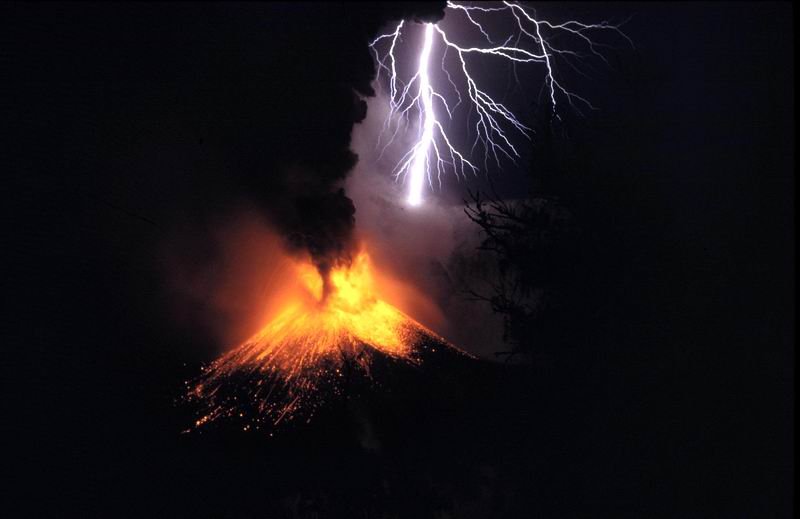Picture this: you’re watching a volcano erupt, and suddenly the sky above it starts crackling with lightning that has nothing to do with any storm clouds. The air itself seems to come alive with electricity, dancing around the towering column of ash and gas. It sounds like something out of a science fiction movie, but it’s actually one of nature’s most spectacular and mysterious phenomena. When volcanoes erupt, they don’t just spew lava and ash – they literally create their own weather systems, complete with lightning storms that can be more intense than anything you’d see in a regular thunderstorm.
The Birth of Volcanic Lightning

Volcanic lightning happens when tiny particles of ash and rock get thrown high into the atmosphere during an eruption. These particles rub against each other as they swirl around in the volcanic plume, creating static electricity just like when you rub a balloon on your hair. The difference is that there are billions of these particles moving at incredible speeds, generating massive amounts of electrical charge. When enough charge builds up, it has to go somewhere – and that’s when you get those amazing lightning bolts crackling through the ash cloud. Scientists have recorded volcanic lightning strikes that are actually more powerful than regular lightning, with some bolts lasting much longer than the split-second flashes we see in normal storms.
How Volcanic Ash Clouds Become Weather Makers

When a volcano erupts, it shoots a column of hot gas and ash miles into the sky, sometimes reaching heights of 20 miles or more. This creates what’s basically a massive, instant weather system that can be seen from space. The hot ash and gas rise so fast that they create their own air currents and wind patterns, almost like a miniature hurricane spinning around the eruption site. These ash clouds can be so thick that they block out the sun for miles around, creating their own twilight in the middle of the day. The temperature differences between the hot volcanic material and the cooler surrounding air create powerful updrafts and downdrafts that can influence weather patterns for hundreds of miles.
The Science Behind Volcanic Weather Systems

The physics of volcanic weather is actually pretty fascinating when you break it down. Hot volcanic gases and ash create what scientists call a “convective column” – basically a massive updraft that works like a giant chimney. This column can reach temperatures of over 1,800 degrees Fahrenheit at the base, which is hot enough to create its own wind patterns as the air rises and cools. As the volcanic material rises, it encounters different atmospheric layers with different temperatures and pressures, causing it to spread out and form that classic mushroom cloud shape. The interaction between all these different air masses creates the perfect conditions for lightning, hail, and even tornadoes to form within the eruption cloud.
Famous Volcanic Lightning Displays Throughout History

Some of the most spectacular volcanic lightning displays have been captured on camera and witnessed by thousands of people. The 2010 eruption of Eyjafjallajökull in Iceland created lightning displays that lit up the night sky for weeks, with photographers from around the world traveling there just to capture the incredible scenes. Mount Vesuvius in Italy has produced volcanic lightning during several of its eruptions, including the famous 79 AD eruption that buried Pompeii. More recently, the 2020 eruption of Taal Volcano in the Philippines created a lightning storm so intense that it looked like the sky was on fire, with social media flooded with videos of the spectacular display. These events show just how powerful and visually stunning volcanic weather can be.
The Role of Water Vapor in Volcanic Lightning
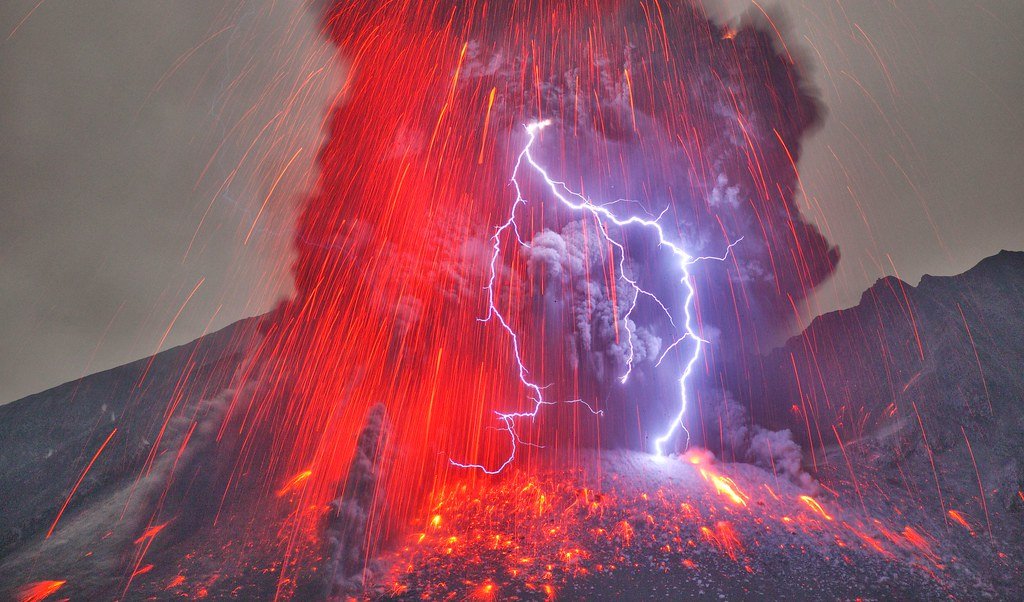
Water plays a crucial role in making volcanic lightning even more dramatic and frequent. Many volcanoes contain significant amounts of water vapor in their eruptions, either from groundwater that gets heated by the magma or from the chemical composition of the volcanic material itself. When this water vapor mixes with the ash and gases in the eruption column, it creates the perfect conditions for electrical activity. The water droplets can freeze at high altitudes, creating ice particles that collide with ash particles, generating even more static electricity. This is why volcanic lightning tends to be more common and intense in eruptions that have high water content, creating storms that can last for hours or even days.
Different Types of Volcanic Lightning Patterns
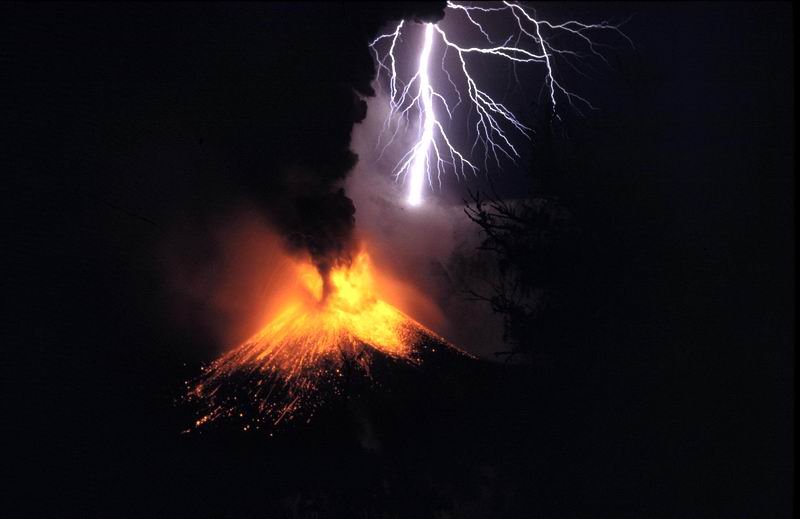
Not all volcanic lightning looks the same – there are actually several different types that scientists have identified. “Vent lightning” occurs right at the mouth of the volcano, where the initial electrical charges are generated as material first gets ejected. “Plume lightning” happens higher up in the ash column, creating those dramatic bolts that zigzag through the volcanic cloud. Then there’s “cloud-to-ground lightning” that strikes from the volcanic cloud down to the earth’s surface, which can be particularly dangerous for people in the area. Some volcanic eruptions even produce “ball lightning” – rare, glowing spheres of electricity that float through the ash cloud like something out of a fantasy movie.
How Volcanic Storms Affect Local Weather Patterns

The weather systems created by volcanoes don’t just stay put – they can actually influence weather patterns for hundreds or even thousands of miles around. Large volcanic eruptions can inject so much ash and gas into the atmosphere that they create their own high and low pressure systems, affecting wind patterns and precipitation far from the volcano itself. The 1991 eruption of Mount Pinatubo in the Philippines actually cooled global temperatures by about 1 degree Fahrenheit for almost two years because of all the ash and sulfur dioxide it put into the atmosphere. Even smaller eruptions can create localized weather changes, bringing unexpected rain, hail, or snow to areas that might not normally experience such weather.
The Dangers of Volcanic Weather Phenomena

While volcanic lightning is undeniably beautiful, it’s also incredibly dangerous for anyone in the area. The lightning strikes can be much more powerful than regular lightning, and they can happen without warning as the electrical charge builds up in the ash cloud. Pilots have to be especially careful around volcanic eruptions because the lightning can interfere with aircraft electronics and the thick ash clouds can cause engines to fail. People on the ground face risks not just from lightning strikes, but also from the sudden weather changes that can bring heavy rain, hail, or flash flooding. The combination of electrical activity and falling ash can also create toxic conditions that make it dangerous to breathe the air.
Volcanic Hail and Ice Formation

One of the most surprising aspects of volcanic weather is that eruptions can actually create hailstorms, even in tropical locations where hail would never normally occur. This happens when water droplets in the volcanic plume get carried up to extremely high altitudes where temperatures are well below freezing. These droplets freeze around tiny particles of ash, creating volcanic hail that can be much larger and more dangerous than regular hail. Some volcanic hailstones have been found to contain layers of ice and ash, almost like a geological record of the eruption frozen in time. These hailstorms can cause significant damage to buildings and crops, adding another layer of destruction to an already devastating natural disaster.
The Connection Between Eruption Intensity and Lightning Frequency
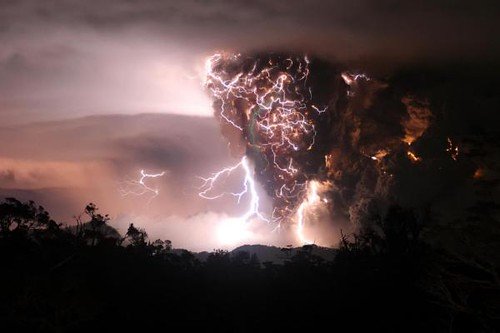
Scientists have discovered that there’s a direct relationship between how violent a volcanic eruption is and how much lightning it produces. More explosive eruptions tend to create more electrical activity because they throw more particles into the air at higher speeds, creating more opportunities for static electricity to build up. Researchers can actually use lightning detection equipment to monitor volcanic eruptions in real-time, helping them understand how dangerous an eruption might be. This has become an important tool for volcano monitoring, especially for eruptions that happen in remote areas where it’s difficult to get close enough to study them directly. The frequency and intensity of volcanic lightning can tell scientists a lot about what’s happening inside the volcano and how the eruption might develop.
How Scientists Study Volcanic Lightning
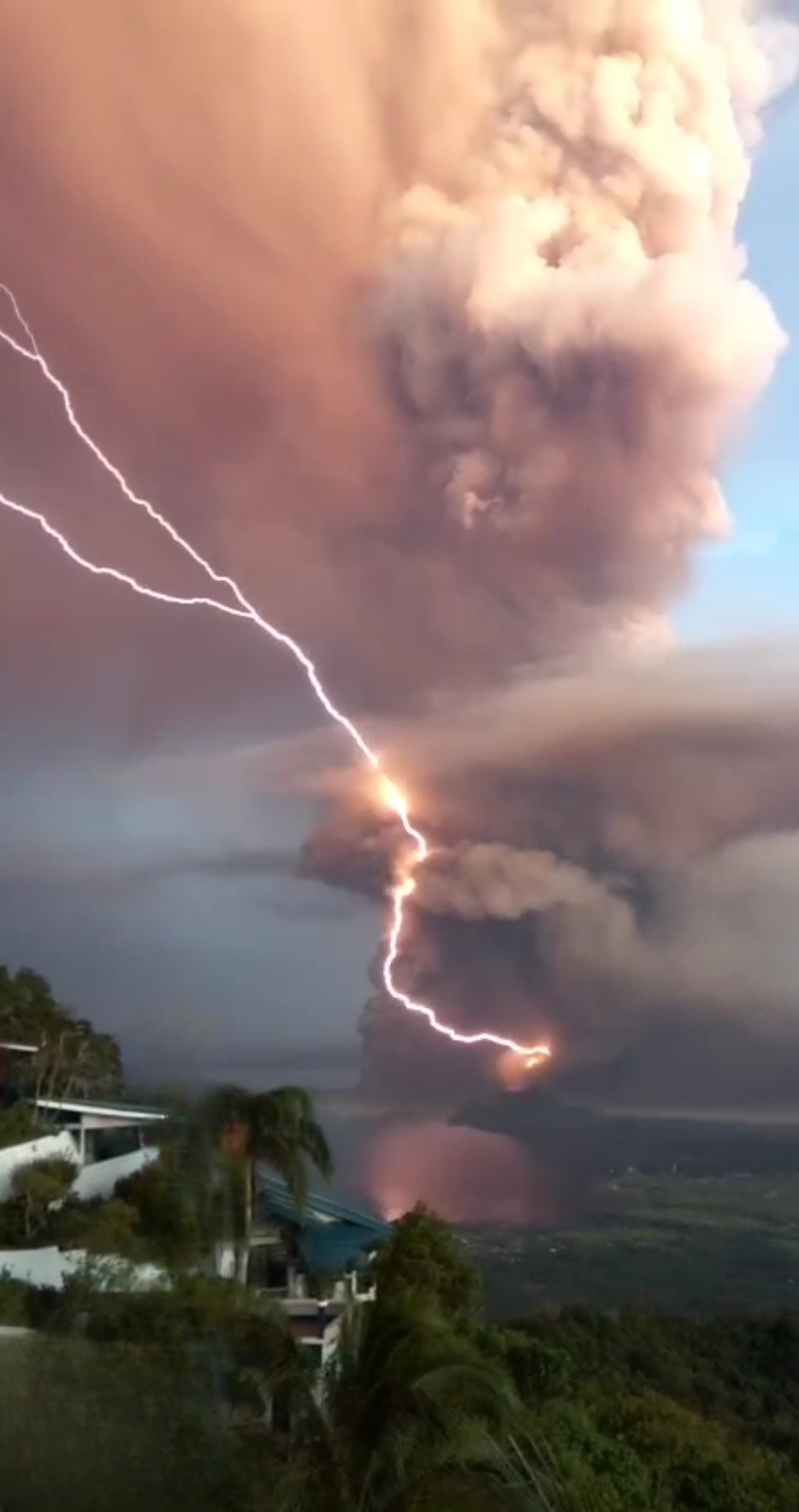
Studying volcanic lightning is incredibly challenging because it happens in some of the most dangerous places on Earth during some of the most violent natural events. Scientists use a combination of high-speed cameras, lightning detection networks, and satellite imagery to capture and analyze these phenomena from a safe distance. Special equipment can detect the radio waves produced by lightning strikes, allowing researchers to track the electrical activity even when the eruption is hidden by clouds or darkness. Some brave scientists have even used drones equipped with specialized sensors to fly near volcanic plumes and collect data, though this is extremely risky and only done under very controlled conditions. The data they collect helps us understand not just volcanic lightning, but also how electrical activity works in other extreme weather conditions.
Volcanic Tornadoes and Wind Phenomena

Believe it or not, some volcanic eruptions can actually create tornadoes and other extreme wind phenomena. The rapid heating of air around the volcanic vent creates powerful updrafts that can start rotating, just like in a regular tornado. These “volcanic tornadoes” are usually smaller and shorter-lived than regular tornadoes, but they can still be incredibly destructive, picking up ash, rocks, and debris and flinging them around at high speeds. The wind patterns around volcanic eruptions can also create what scientists call “pyroclastic density currents” – basically avalanches of hot ash and gas that flow down the sides of the volcano at speeds of over 100 miles per hour. These currents can generate their own weather systems as they move, creating dust devils and other wind phenomena that add to the chaos of the eruption.
The Impact on Aviation and Air Travel

Volcanic weather systems pose serious risks to aviation, and airlines have to be constantly monitoring volcanic activity around the world to keep flights safe. The combination of thick ash clouds and electrical activity can be deadly for aircraft – ash can clog jet engines and cause them to fail, while lightning can damage electrical systems and navigation equipment. The 2010 Eyjafjallajökull eruption in Iceland shut down air travel across Europe for weeks, stranding millions of passengers and costing airlines billions of dollars. Modern aircraft have better systems for detecting and avoiding volcanic ash, but the unpredictable nature of volcanic weather makes it challenging to plan safe flight routes. Pilots receive special training on how to recognize and avoid volcanic hazards, and air traffic controllers have protocols for rerouting flights when volcanic activity is detected.
Ancient Observations and Mythology

People have been witnessing volcanic lightning for thousands of years, and many ancient cultures incorporated these spectacular displays into their mythology and religious beliefs. The ancient Greeks believed that volcanic lightning was a sign of the gods’ anger, while some Native American tribes saw it as a battle between sky spirits and earth spirits. Historical accounts from Pompeii describe lightning striking from the volcanic cloud during Mount Vesuvius’s eruption in 79 AD, showing that people have long recognized this phenomenon even if they didn’t understand the science behind it. These ancient observations have actually helped modern scientists understand volcanic lightning better, providing historical data points that help them study how these phenomena have changed over time. Some cultures even developed early warning systems based on the behavior of volcanic lightning, using it to predict when eruptions might become more dangerous.
Climate Effects of Volcanic Weather Systems

Large volcanic eruptions don’t just create local weather – they can actually affect global climate patterns for years. The ash and gases thrown into the atmosphere by major eruptions can block sunlight and lower temperatures worldwide, while also changing precipitation patterns and wind currents. The 1815 eruption of Mount Tambora in Indonesia caused what became known as “the year without a summer” in 1816, leading to crop failures and famine across much of the world. The sulfur dioxide released by volcanic eruptions can combine with water vapor in the atmosphere to form sulfuric acid droplets that reflect sunlight back into space, creating a cooling effect that can last for several years. This shows how volcanic weather systems can have impacts far beyond the immediate area of the eruption, affecting everything from agriculture to ocean currents.
Modern Monitoring and Prediction Technology

Today’s scientists have access to amazing technology that allows them to monitor volcanic weather systems in real-time and even predict some aspects of how they’ll develop. Satellite imagery can track ash clouds as they move around the globe, while ground-based sensors can detect the electrical activity that leads to volcanic lightning. Doppler radar systems can peer through ash clouds to see the internal structure of volcanic plumes, helping scientists understand how the weather systems are forming and evolving. Computer models can now simulate volcanic eruptions and predict how they might create weather patterns, giving emergency managers better tools for planning evacuations and protecting communities. This technology has revolutionized our understanding of volcanic weather and made it much safer for people living near active volcanoes.
The Future of Volcanic Weather Research

As climate change continues to affect weather patterns around the world, scientists are becoming increasingly interested in understanding how volcanic weather systems might change in response. Warmer global temperatures could affect how volcanic ash interacts with the atmosphere, potentially making volcanic lightning more or less common depending on the specific conditions. Researchers are also developing new ways to study these phenomena, including using artificial intelligence to analyze thousands of hours of volcanic lightning footage and identify patterns that human observers might miss. Some scientists are even exploring whether we might be able to use volcanic lightning as a source of renewable energy, though this is still very much in the experimental stage. The future of volcanic weather research looks incredibly exciting, with new discoveries being made all the time about these amazing natural phenomena.
Personal Safety During Volcanic Lightning Events
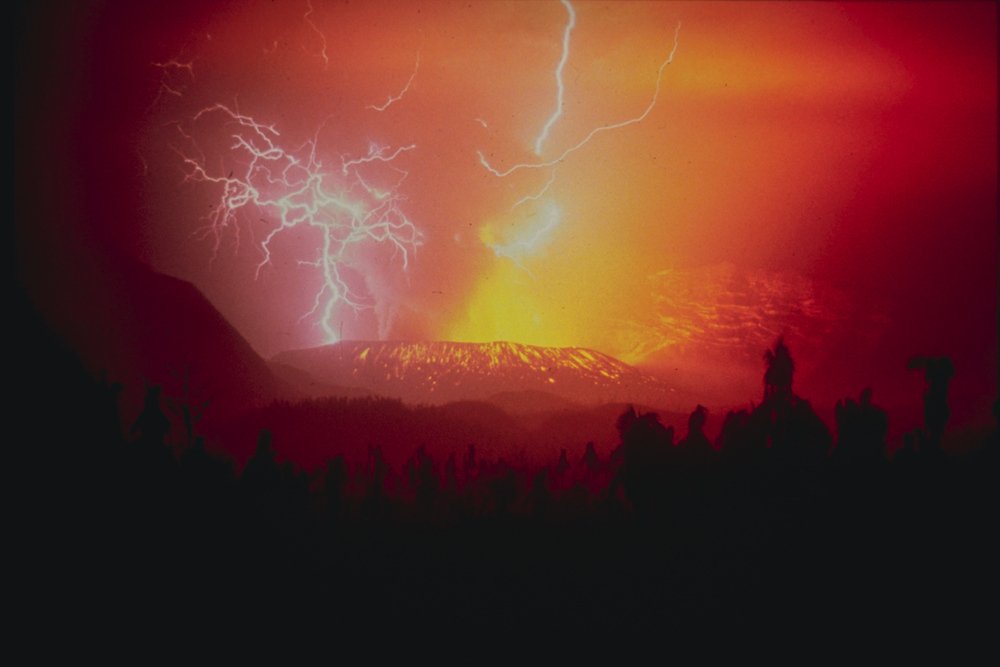
If you ever find yourself near a volcanic eruption, knowing how to stay safe from volcanic lightning could save your life. The most important thing is to get as far away from the volcano as possible – volcanic lightning can strike much farther from the eruption site than regular lightning. If you can’t get away, seek shelter in a building or vehicle, just like you would during a regular thunderstorm, but remember that volcanic ash can make the air dangerous to breathe. Avoid high ground and metal objects that could attract lightning strikes, and stay away from windows that could be broken by hail or flying debris. If you’re caught outside during volcanic lightning, crouch down low and avoid touching the ground with your hands – the safest position is to squat down on the balls of your feet. Most importantly, listen to local authorities and follow evacuation orders if they’re given.
The Beauty and Terror of Nature’s Electric Show
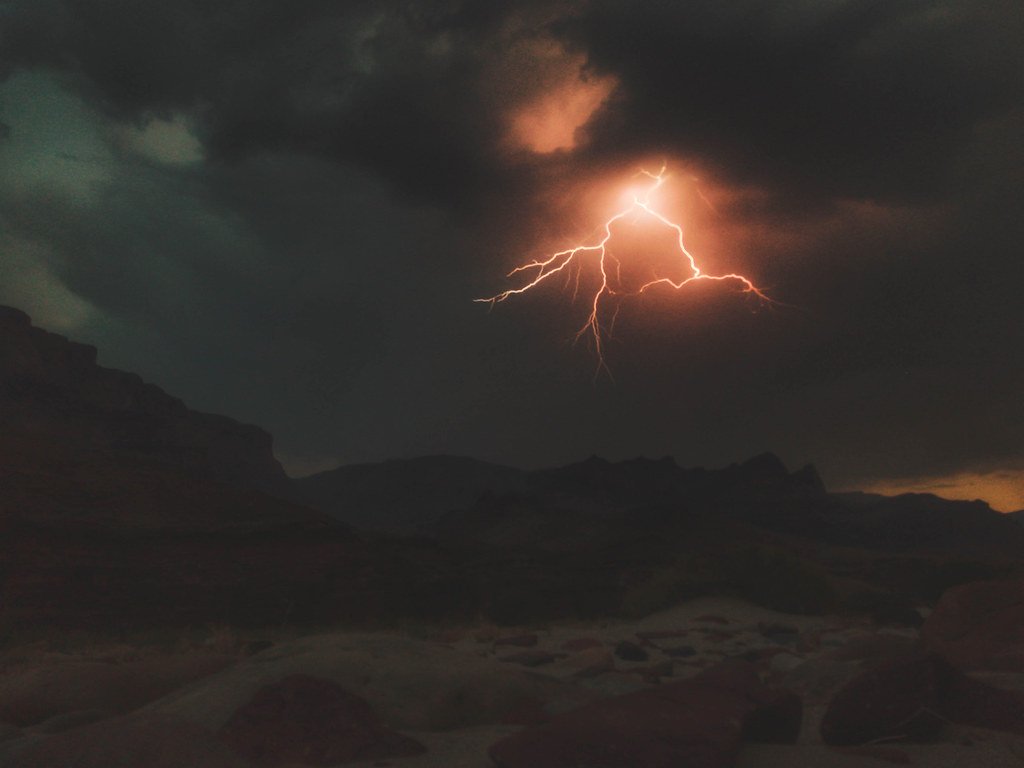
There’s something both terrifying and beautiful about watching a volcano create its own lightning storm. The sheer power and unpredictability of these natural phenomena remind us just how small we are compared to the forces that shape our planet. Videos and photographs of volcanic lightning have become some of the most shared content on social media, capturing people’s imagination and inspiring a new generation of scientists and nature enthusiasts. These displays represent the raw creative power of Earth itself, showing us that our planet is still very much alive and actively shaping itself through processes that have been going on for billions of years. Every volcanic lightning strike is a reminder that we live on a dynamic, ever-changing world that continues to surprise and amaze us with its incredible natural phenomena.
The next time you hear about a volcanic eruption, remember that you’re not just witnessing the birth of new land or the destruction of old landscapes – you’re watching Earth create its own weather show, complete with lightning that would make any storm jealous. Isn’t it amazing how much power our planet holds beneath its surface?

